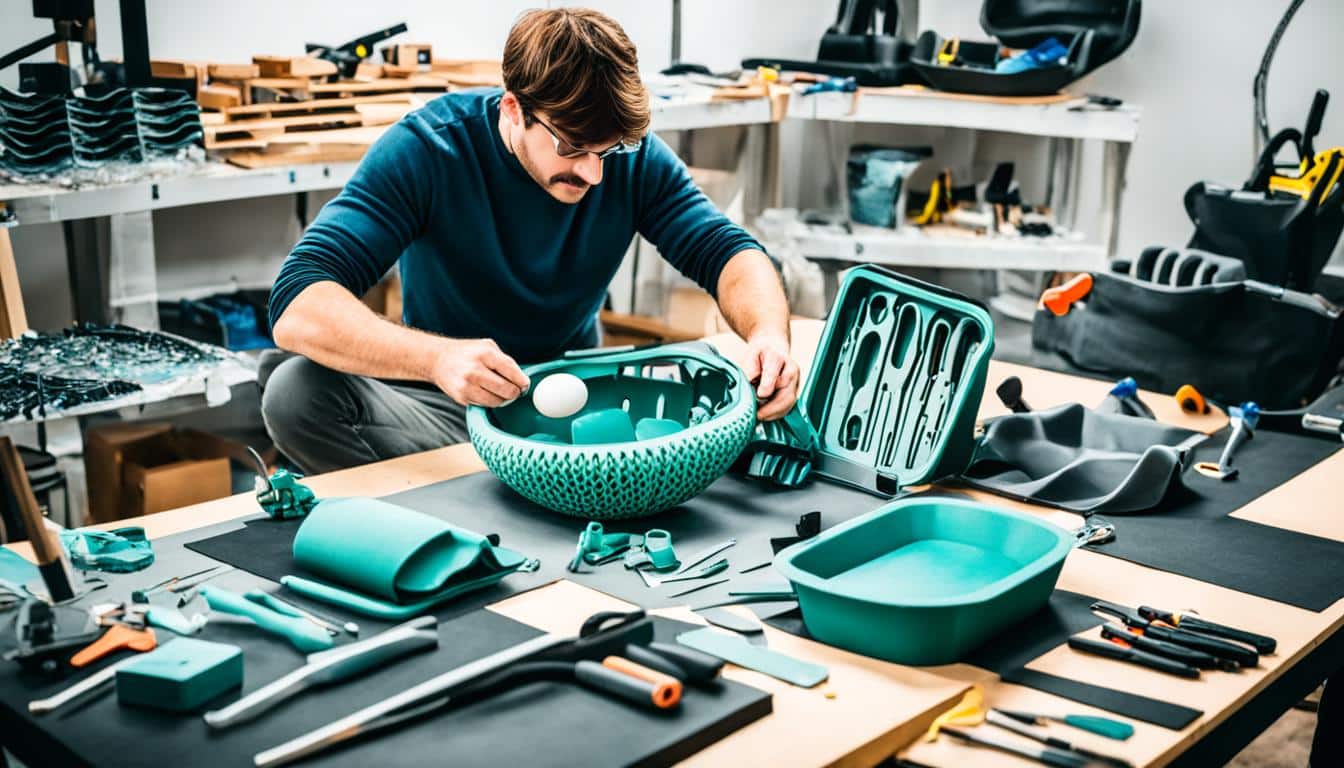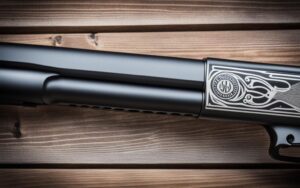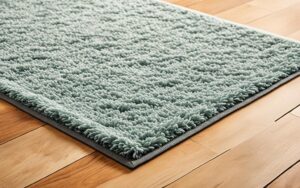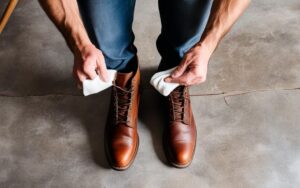Did you know that creating your own egg chair at home is not only possible but also incredibly rewarding?
With just a few materials and some woodworking skills, you can embark on a DIY adventure that will result in a stunning and comfortable egg chair that fits perfectly into your space.
In this step-by-step guide, I will walk you through the process of designing, crafting, and installing your very own homemade egg chair.
Throughout this guide, you will find detailed instructions and valuable tips to ensure your egg chair turns out exactly as you envision.
Whether you’re a seasoned woodworker or a beginner in the realm of DIY projects, this guide will provide you with the knowledge and inspiration you need to successfully create your own egg chair from scratch.
Materials and Tools Needed
Before you begin making your own egg chair, it’s important to gather all the necessary materials and tools. Having these supplies on hand will ensure a smooth and successful DIY project. Here’s a list of the materials needed for your egg chair:
- Rattan cane stalks and peels (wicker)
- Metal or wooden frame (optional)
- Cushions and pillows
- Steel hanging chain
- Eye bolts
- Carabiners
- Hanging hardware
- Scissors
- Drill with bits
- Screwdriver
- Measuring tape
With these DIY egg chair supplies, you’ll have everything you need to get started on your project.
Whether you choose to use a metal or wooden frame, the rattan cane stalks and peels will create the stylish wicker design that gives the egg chair its unique look and feel.
The cushions and pillows will provide the comfort you desire when lounging in your new creation. Additionally, the hanging chain, eye bolts, carabiners, and other hardware will ensure that your egg chair is securely suspended and safe to use.
Now that you have your materials and tools ready, let’s move on to the next section and explore some tips for making a wicker egg chair.
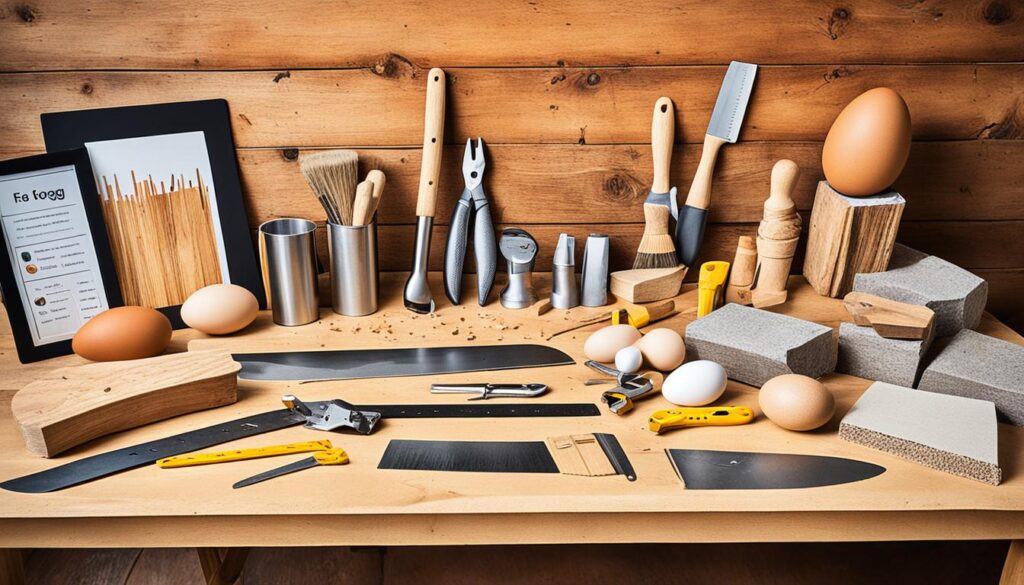
Tips for Making a Wicker Egg Chair
When it comes to making a wicker egg chair, there are a few important tips to keep in mind. These tips will help you create a beautiful and sturdy chair that you can enjoy for years to come.
1. Ensure a Sturdy Frame
First and foremost, it’s crucial to ensure that the frame of your wicker egg chair is sturdy and able to support the weight of the chair. Consider using strong and durable materials such as metal or high-quality wood for the frame construction. Reinforcing the frame with extra support beams or crossbars can also add stability and strength to your chair.
2. Add Extra Layers or Padding
To maximize comfort and support, consider adding extra layers or padding to the seat of your egg chair. This can be done by using foam cushions or upholstering the seat with cushioning material.
The additional padding will enhance the sitting experience and make your chair even more inviting.
3. Shape with Care
When shaping your wicker egg chair, pay close attention to achieving the distinctive egg shape.
Focus on achieving proper curvature and symmetry. Taking your time and shaping with care will ensure that your chair looks visually appealing and accurately captures the iconic egg chair design.
4. Choose a Suitable Weaving Pattern
When it comes to weaving the wicker, choose a pattern that suits your style and preferences. There are various weaving techniques to choose from, such as traditional basket weave or herringbone weave.
Experiment with different patterns to find the one that best complements your egg chair design and aesthetic vision.
5. Leave an Opening for Entrance and Exit
When weaving the wicker, make sure to leave an opening for the entrance and exit of the chair. This will allow you to easily get in and out of the chair comfortably.
The size of the opening can vary based on personal preference, but it’s important to ensure that it is large enough for easy access.
6. Securely Attach Hanging Hardware
For proper installation and safety, it is essential to securely attach the hanging hardware, chain, and eye bolts to your wicker egg chair.
Make sure to use strong and reliable hardware that can support the weight of the chair. Double-check all attachments to ensure that they are properly tightened and secure before hanging the chair.
7. Weather-Resistant Cushions and Pillows
Enhance the comfort and style of your wicker egg chair by adding weather-resistant cushions and pillows. Opt for materials that can withstand outdoor conditions, such as polyester or acrylic fabrics.
These weather-resistant materials will ensure that your cushions and pillows remain in good condition, even when exposed to sunlight or rain.
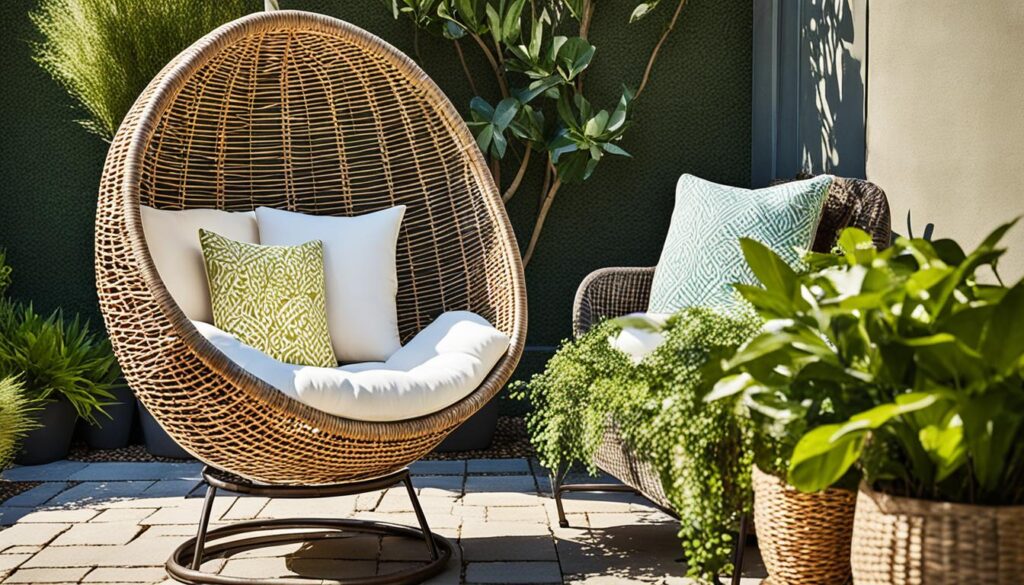
By following these tips, you’ll have the knowledge and guidance to make your own stunning wicker egg chair.
Choosing Materials for an Egg Chair
When it comes to creating the perfect egg chair, selecting the right materials is crucial.
The choice of materials not only affects the overall look and feel of the chair but also its durability and suitability for different environments. Two popular options for egg chair materials are rattan and wicker.
Rattan, known for its natural and organic appearance, is a favorite among homeowners. It offers a timeless and stylish look that can seamlessly blend with any interior or outdoor space.
Rattan’s durability and weather resistance make it suitable for both indoor and outdoor use, adding versatility to your egg chair design.
However, ensure that the rattan is properly treated and finished to withstand the elements and preserve its longevity.
If you prefer a more traditional and classic look, wicker is another excellent choice for an egg chair. Wicker is woven from various materials, such as rattan, bamboo, or synthetic fibers, creating a charming and rustic aesthetic.
While wicker egg chairs may be better suited for indoor use or covered outdoor areas, they can still provide an inviting and cozy seating option.
When it comes to cushions and pillows for your egg chair, opt for outdoor-grade fabrics such as polyester or acrylic.
These materials are designed to withstand exposure to the elements, ensuring that your cushions remain vibrant and comfortable over time.
Take into account your personal preferences, the intended location of the chair (indoor or outdoor), and considerations for aesthetics and comfort when selecting the best materials for your egg chair.
FAQs
What Materials And Tools Do I Need To Make An Egg Chair?
You will need rattan cane stalks and peels (wicker), a metal or wooden frame (optional), cushions and pillows, steel hanging chain, eye bolts, carabiners, hanging hardware, scissors, a drill with bits, a screwdriver, and a measuring tape.
What Tips Should I Keep In Mind When Making A Wicker Egg Chair?
Ensure the frame is sturdy, add extra layers or padding to the seat for comfort, shape the chair carefully to achieve the egg shape, choose a weaving pattern that suits your style, leave an opening for entrance and exit, securely attach the hanging hardware, chain, and eye bolts, and consider adding weather-resistant cushions and pillows.
What Materials Should I Choose For An Egg Chair?
Rattan is often considered the best option for its natural look, durability, and weather resistance.
However, make sure the rattan is treated for outdoor use. Additionally, use outdoor-grade fabrics like polyester or acrylic for cushions and pillows to withstand the elements.
